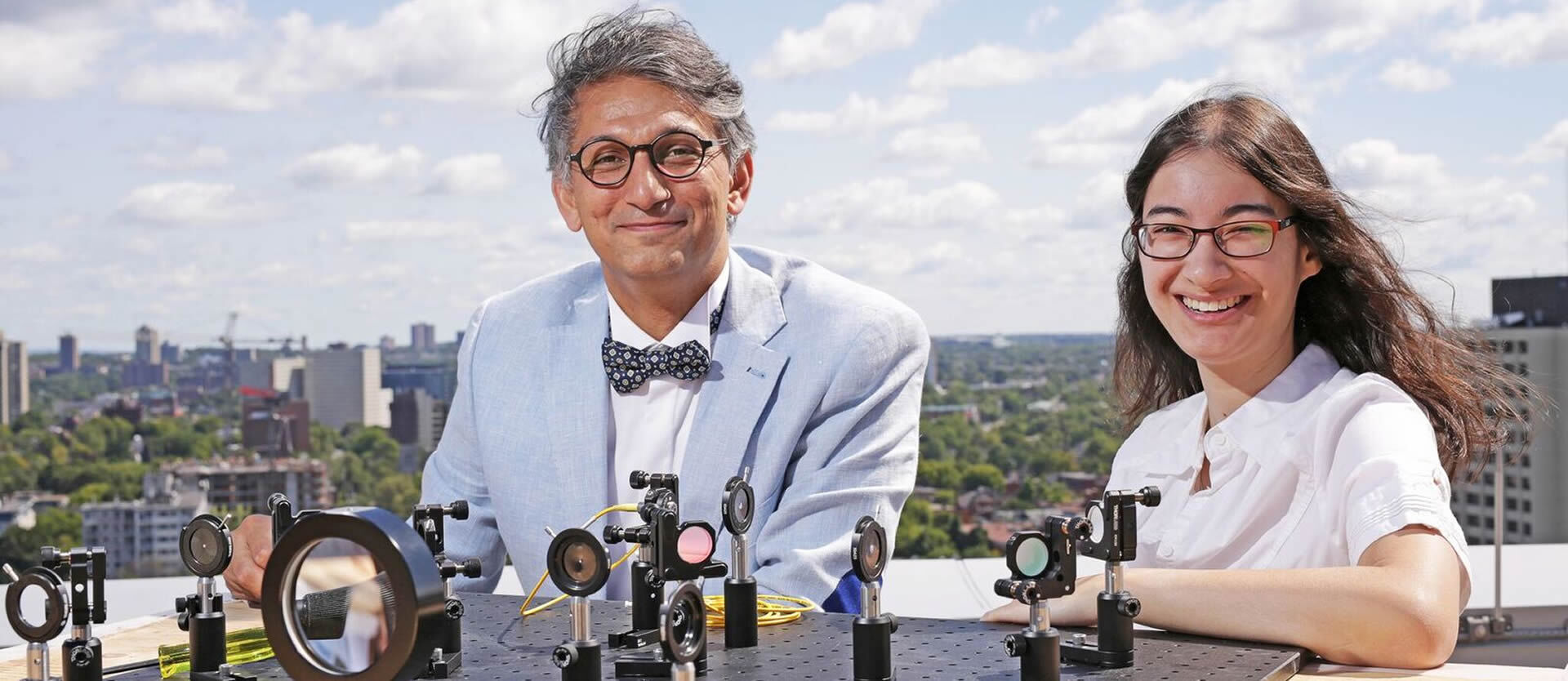
Packing more data into photons

Physicists based in the Canadian capital Ottawa have successfully transmitted single photons between two points 300 m apart. Single photons have been communicated over longer paths before. What makes this experiment remarkable is the fact that each photon carried more than s single bit of information. Up until now, photons could only be imprinted with single bits, each encoding either 0 or 1 – a technique referred to as two-dimensional cryptography. However, by manipulating two of the properties of photons – their spin and their angular momentum – the Canadian team, led by Prof. Ebrahim Karimi, was able to encryt two bits of information (either 01, 10, 00 or 11) in each particle, thus accomplishing what is referred to as 4D quantum cryptography.
Quantum cryptography may well serve as the basis for the data technologies of the future, as quantum particles, such as photons, in principle provide a means for the secure transmission of information. Paradoxically, the delicate nature of quantum states is what makes this possible. For any attempt by a third party to listen in to the information flow will inevitably alter the properties that carry the encrypted message. This allows the intended receiver to establish that an eavesdropper has intercepted the transmission at some point along its way.
The most challenging aspect of the experiment carried out by the cryptographers in Ottawa was to faithfully transmit the fragile quantum states of their photons not just under controlled conditions in the laboratory, but through the open space separating the rooftops of two buildings on the university campus. In an urban setting, factors such as atmospheric turbulence and vibrations transmitted though the walls of the buildings threaten to compromise faithful transmission of the encoded information. Would the photons survive the many imponderables on their journey through the roiling air above the city’s streets?
Happily, the majority completed the journey to the receiving station unscathed, although some of the photons dispatched by the transmitter were lost along the way. The researchers succeeded in transmitting, on average, 1.6 times more information per photon than the level attainable with the conventional 2D method of encryption, thus achieving a significant increase in transmissible information density. “The secure, free-space communication scheme we demonstrated could potentially link Earth with satellites or securely connect places where it is too expensive to install (optic) fiber,” Karimi said.
Encrypted quantum signals have previously been sent from a surface transmitter to an aircraft – a feat first accomplished in 2013 by a team using 2D cryptography, which was led by Prof. Harald Weinfurter and Sebastian Nauerth of the Faculty of Physics at LMU Munich. This was the first demonstration of quantum communication between a ground station and a rapidly moving receiver.
Publication:
High-dimensional intracity quantum cryptography with structured photons
Optica, Vol. 4, Issue 9, pp. 1006-1010 (2017); doi.org/10.1364/OPTICA.4.001006









